Mustard greens, a versatile and nutritious leafy vegetable, encompass a wide range of varieties, including Chinese mustard greens. While both share the “mustard greens” moniker, they possess distinct characteristics that set them apart. This comprehensive guide delves into the differences between Chinese mustard greens and traditional mustard greens, exploring their unique flavors, textures, and culinary applications.
Botanical Classification
Chinese mustard greens, scientifically known as Brassica juncea, belong to the Brassicaceae family, which also includes cabbage, broccoli, and cauliflower. Traditional mustard greens, on the other hand, encompass several species within the Brassica genus, including Brassica juncea (brown mustard), Brassica rapa (field mustard), and Brassica nigra (black mustard).
Appearance and Texture
Chinese mustard greens are characterized by their long, slender leaves with serrated edges. They typically have a dark green color and a slightly waxy texture. Traditional mustard greens exhibit a broader range of appearances, varying in leaf shape, size, and color. Some varieties, such as Southern Giant Curled, possess large, deeply lobed leaves, while others, like mizuna, have narrow, elongated leaves.
Flavor Profile
Chinese mustard greens are known for their assertive, pungent flavor, often described as spicy or peppery. This spiciness stems from the presence of glucosinolates, sulfur-containing compounds that also contribute to the characteristic aroma of mustard greens. Traditional mustard greens, while still possessing a peppery taste, tend to be milder in flavor compared to their Chinese counterparts.
Culinary Applications
The culinary versatility of mustard greens extends to both Chinese and traditional varieties. Chinese mustard greens are commonly used in stir-fries, soups, and pickles. Their robust flavor complements bold seasonings and sauces. Traditional mustard greens are often braised, sautéed, or added to salads. Their milder taste makes them a versatile ingredient in various dishes, from hearty stews to delicate salads.
Nutritional Value
Both Chinese mustard greens and traditional mustard greens are packed with essential nutrients. They are rich in vitamins A, C, and K, as well as minerals like calcium, iron, and magnesium. Additionally, they contain antioxidants and fiber, making them a healthy and nutritious addition to any diet.
Chinese mustard greens and traditional mustard greens, while sharing the “mustard greens” name, are distinct varieties with unique characteristics. Chinese mustard greens, with their assertive flavor and slender leaves, are ideal for dishes that call for a spicy kick. Traditional mustard greens, with their milder taste and diverse appearances, offer versatility in culinary applications. Understanding the differences between these two varieties empowers home cooks and culinary professionals alike to make informed choices when selecting mustard greens for their culinary creations.
What Do Mustard Greens Taste Like?
Chinese mustard greens have a mildly peppery flavor and are highly bitter. To counteract the bitterness, you can pre-blanch them and cook them with ginger and/or a small amount of sugar.
The flavor gets better with time, just like any bitter vegetable (bitter melon, broccoli rabe, arugula, radicchio). Do you recall a time when you used to detest some veggies as a child but as an adult you came to love them?
To truly enjoy bitter vegetables, you must learn how to cook them properly. It’s a great idea to start with aromatics like garlic, ginger, and hot dried chilis. To fully appreciate the health benefits of this leafy green Chinese vegetable, you can also easily mellow its bitter taste by properly salting the greens and adding a small amount of sugar.
Different Varieties of Mustard Greens & How to Use Them
Let’s discuss the various varieties of mustard that are available and their purposes.
Please take note that the names we use below may differ from the labels found in Chinese grocery stores.
It’s not unusual to see different names for the same vegetables, particularly leafy greens. Depending on the origins of the growers or store employees, names may differ. It also depends on the method they use to translate names into English, which may cause problems with accuracy.
Because of this, having pictures is crucial; we’ve included some below.
This is probably the most popular mustard green that you can find in Chinese groceries. It is also known as dai gai choy, or “big mustard greens” in Cantonese.
Their thick stalks/stems are most appealing for pickling, though you can eat both the stalks and the leaves.
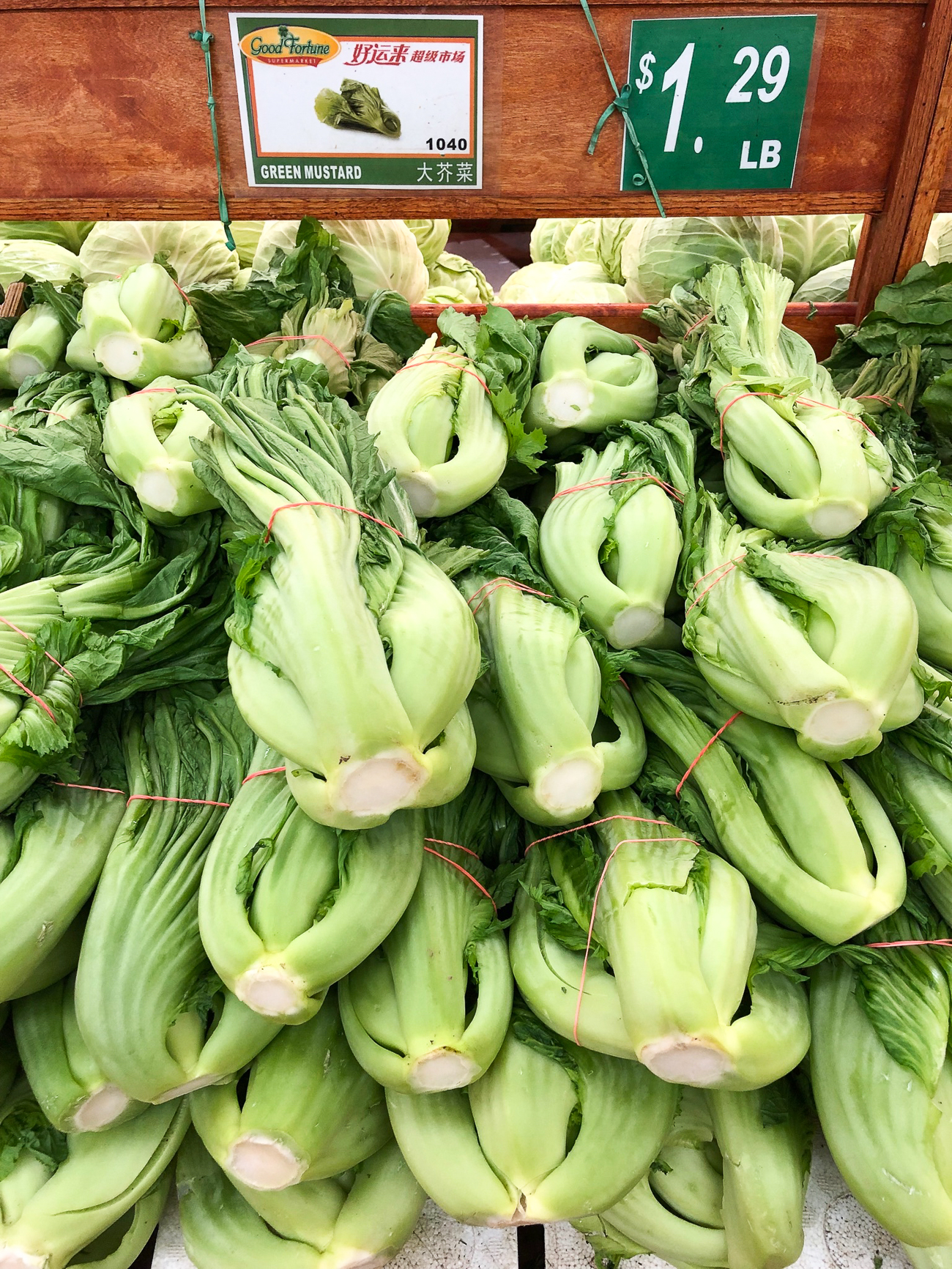
Head mustard, also called swatow mustard or heart mustard, is also called dai gai choy in Cantonese. In fact, it resembles the large petiole mustard quite a bit, but it’s stubbier and has leaves and stems that gather into a little “head.” Imagine them as a more compact form of the large-petiole mustard.
This variety is also a favorite for Cantonese salted/sour mustard, also known by various spellings as ham choy or haam choy. It is pronounced “hahm choy. ”.
Pickled onions have a pleasant crunch and a mildly sour taste that makes them ideal for easy stir-fries and soups.
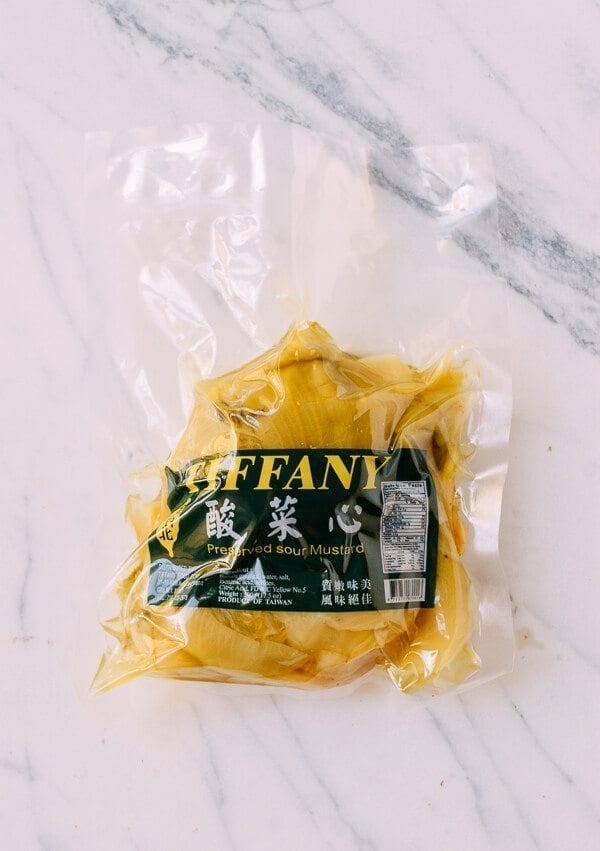
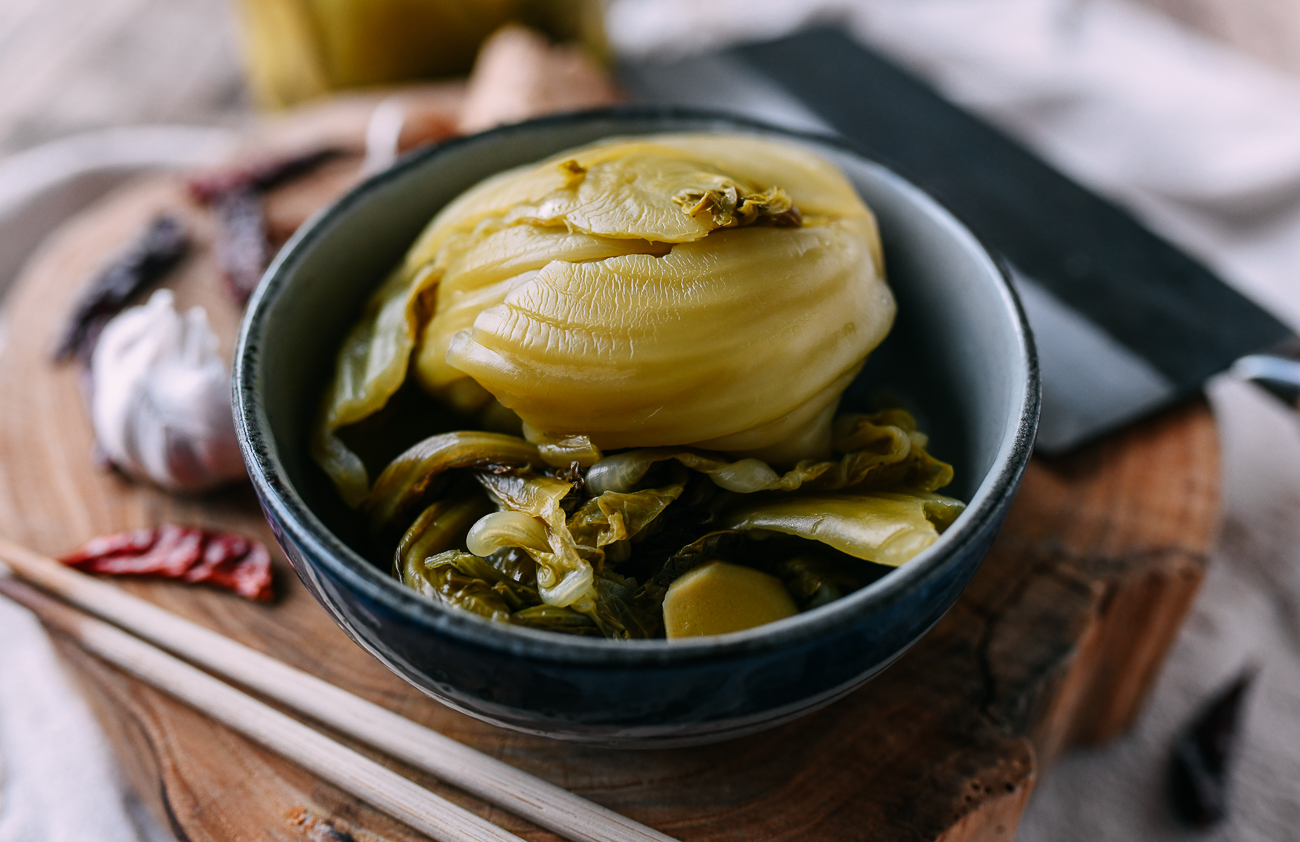
Although the leaves of this mustard can be pickled whole, chefs occasionally remove the leaves and use them raw in soups.
Sometimes, vegetable vendors severely trim or chop off the leaves, making the produce appear somewhat scraggly when you buy it. Some people don’t even care about the leaves, that’s how crucial the stems are!
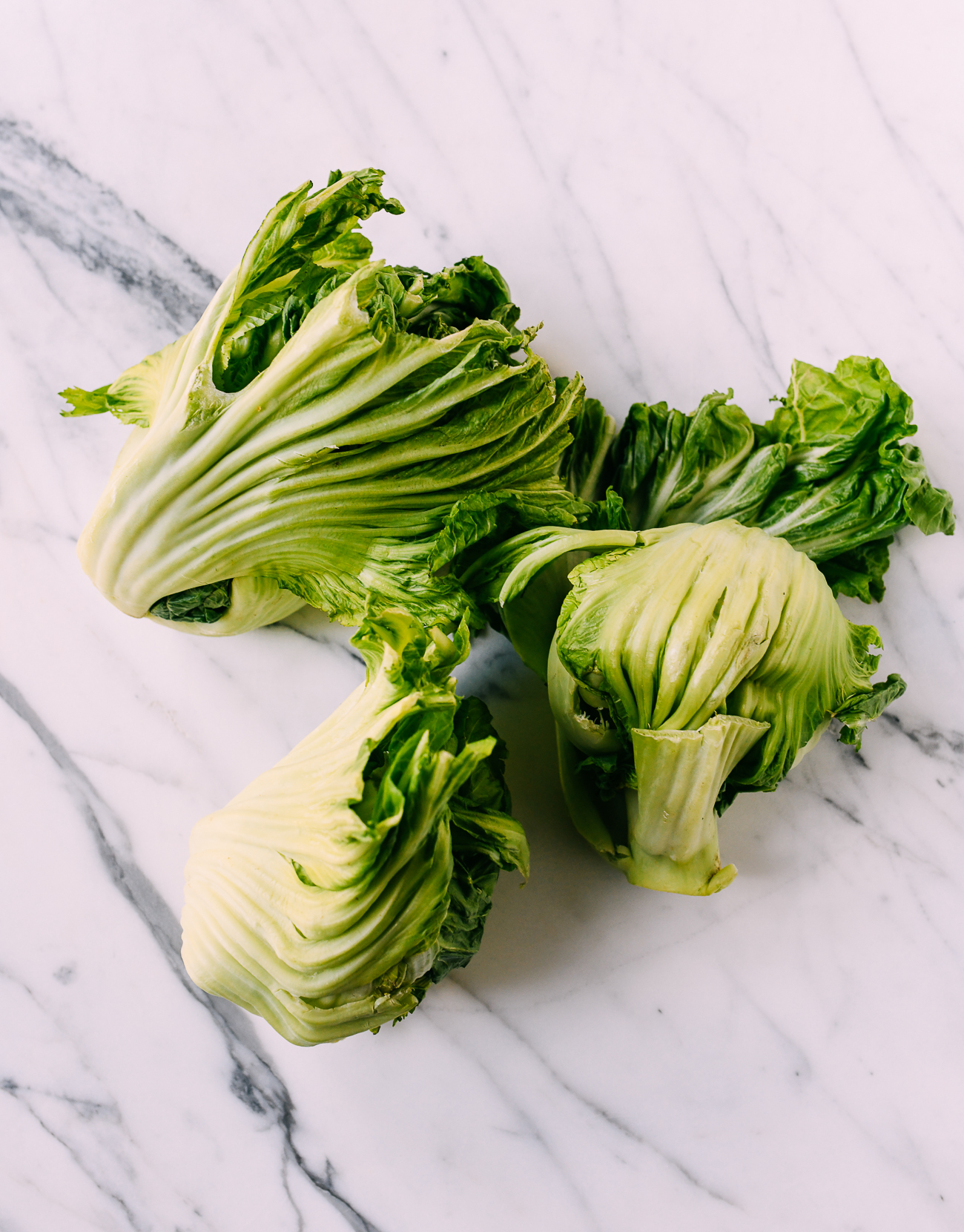
Chinese supermarkets are now carrying leafy Chinese mustard greens, which are also referred to as snow mustard greens or xuě lĐ hóng (雦里纖) in Chinese.
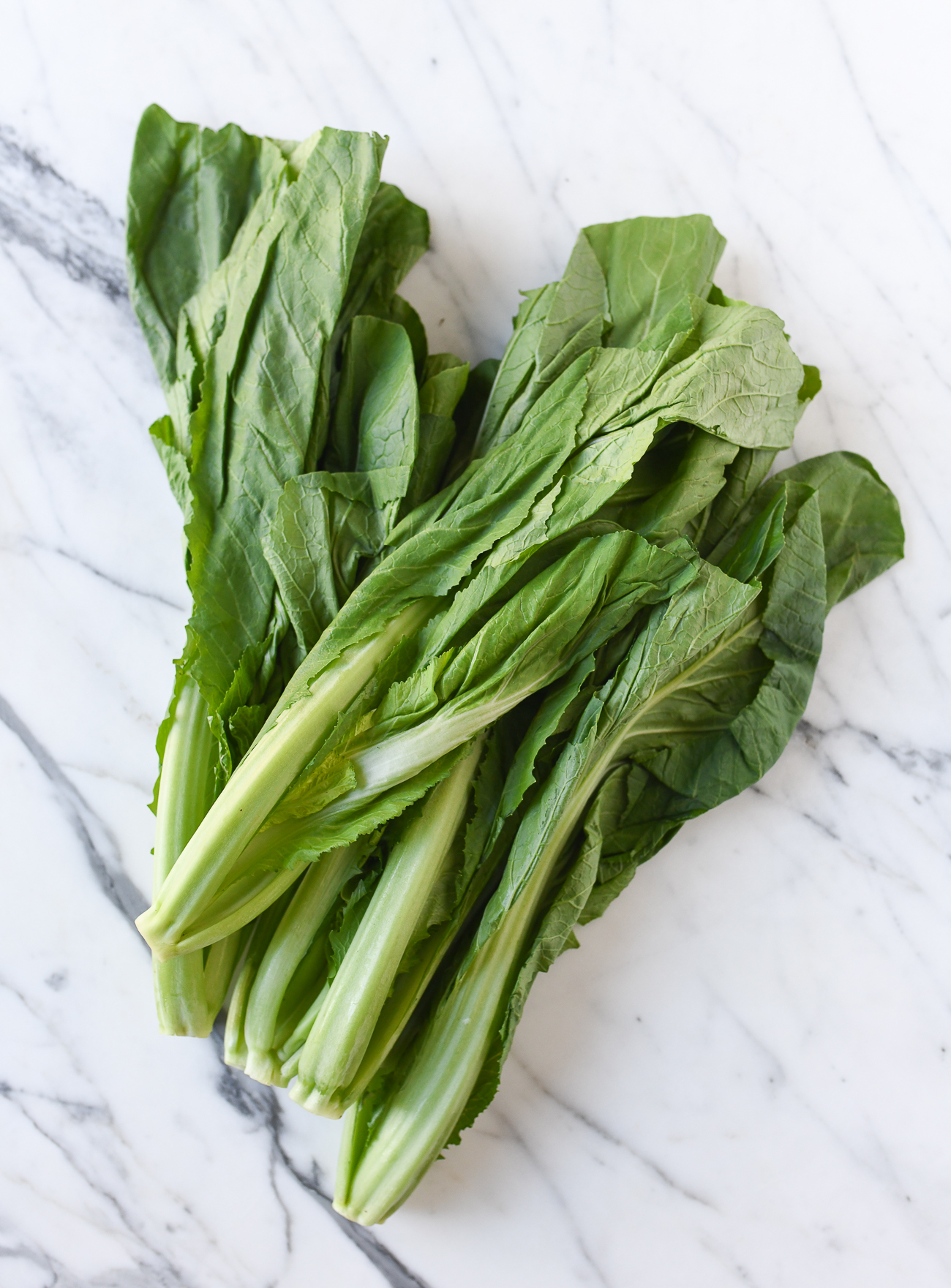
Their tender stems and larger leaves make them an excellent choice for stir-frying. We prepare our own stir-fried xuelihong at home often.
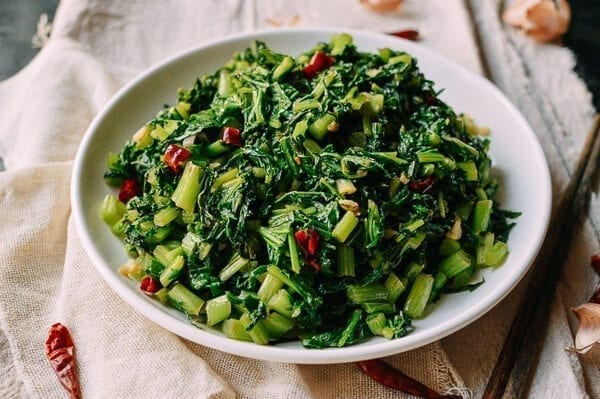
But these leafy mustard greens are also salted and preserved, just like their related cultivars. (Judy made Chinese preserved greens from our own garden kale using the same method.) ).
This type produces pickled “potherb mustard,” which is available in vacuum-sealed bags and cans.
Watch out though. It can be confusing when they are referred to as “pickled cabbage” or “preserved cabbage.” Look for these characters on the label: 雪菜 (xuě cài).
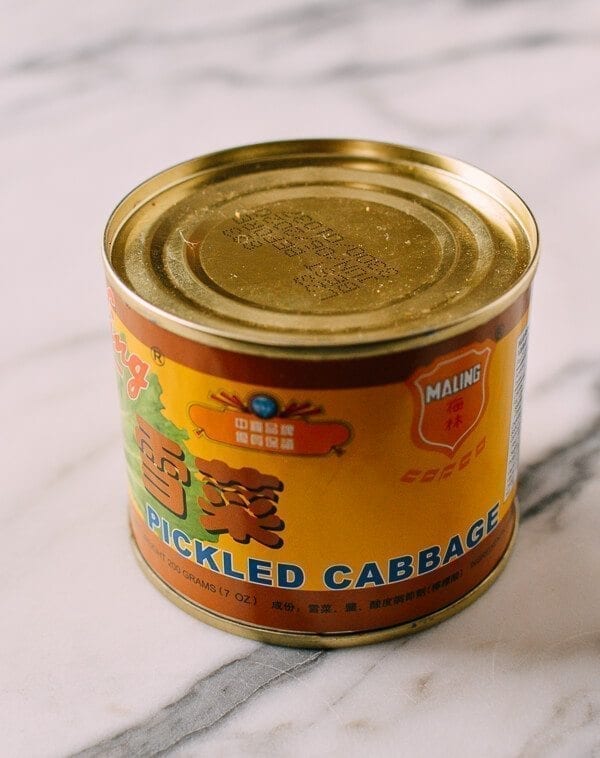
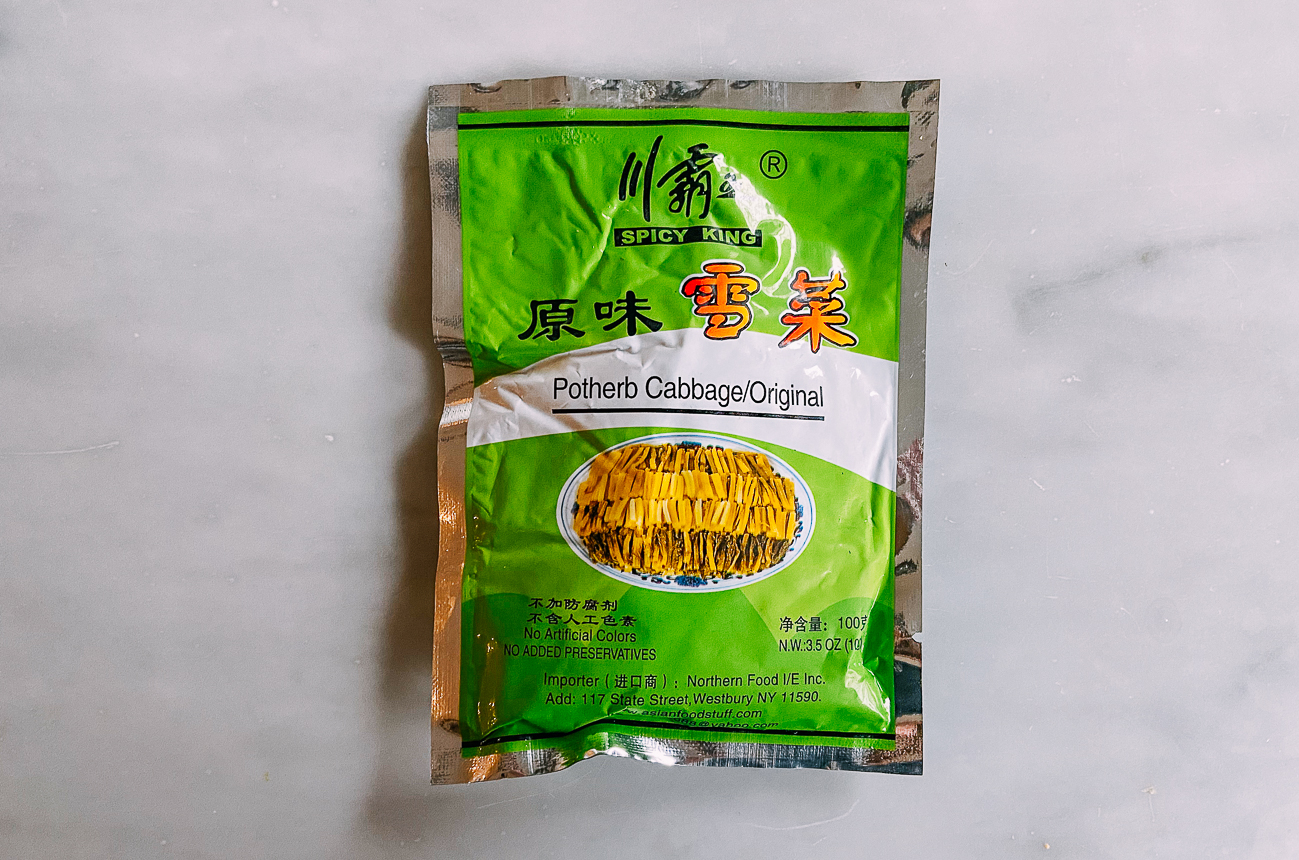
Another variety you might find at Asian produce markets is called mizuna, also known as spider mustard or Japanese mustard greens. This variety is not as common.
Its spiky leaves help you identify it from other green vegetables. They look almost like a pointier version of arugula.
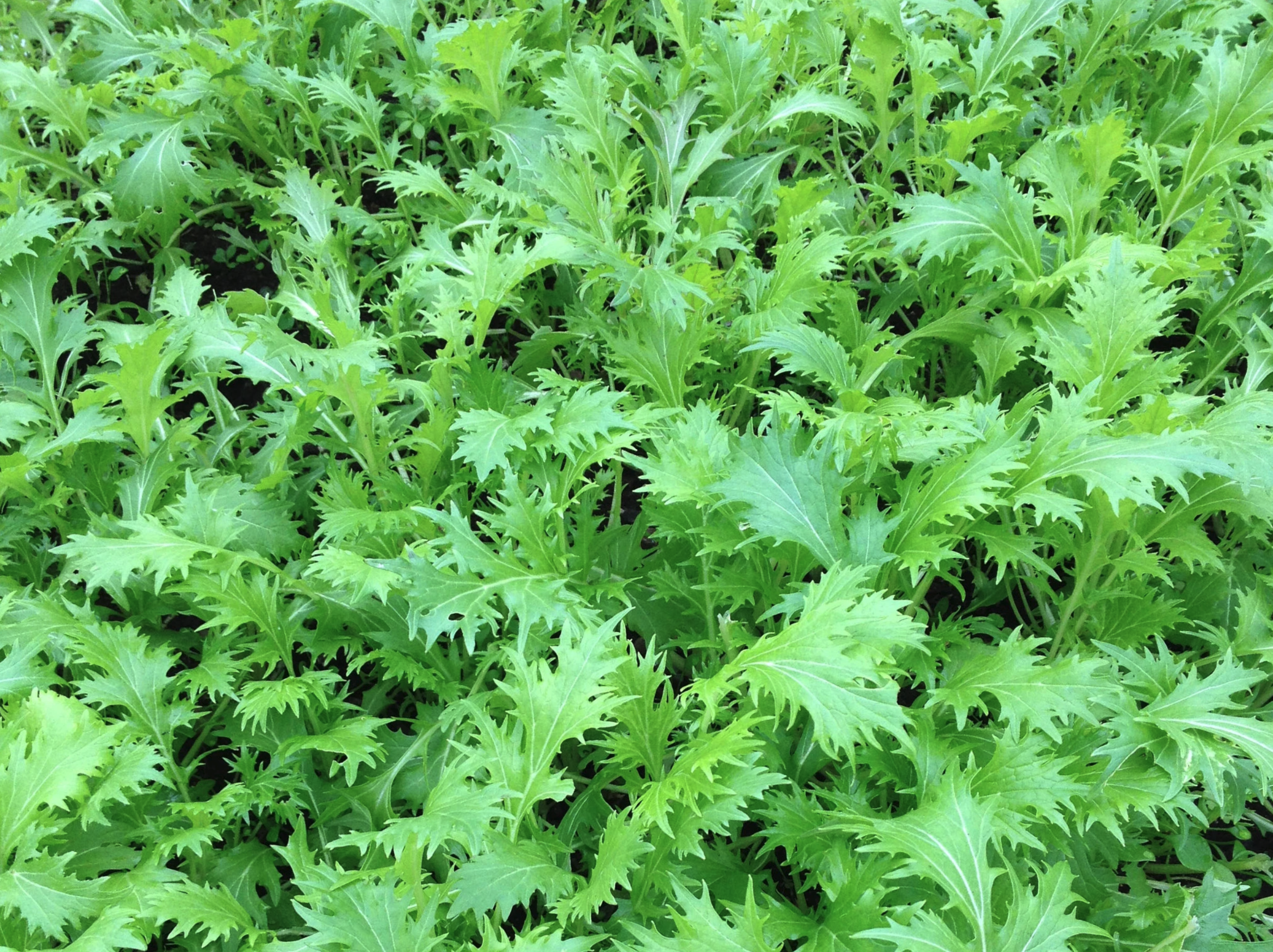
Though the leaves’ sharp edges do resemble those of Tong ho (edible chrysanthemum leaves), don’t confuse them with it. They have very different flavor profiles.
